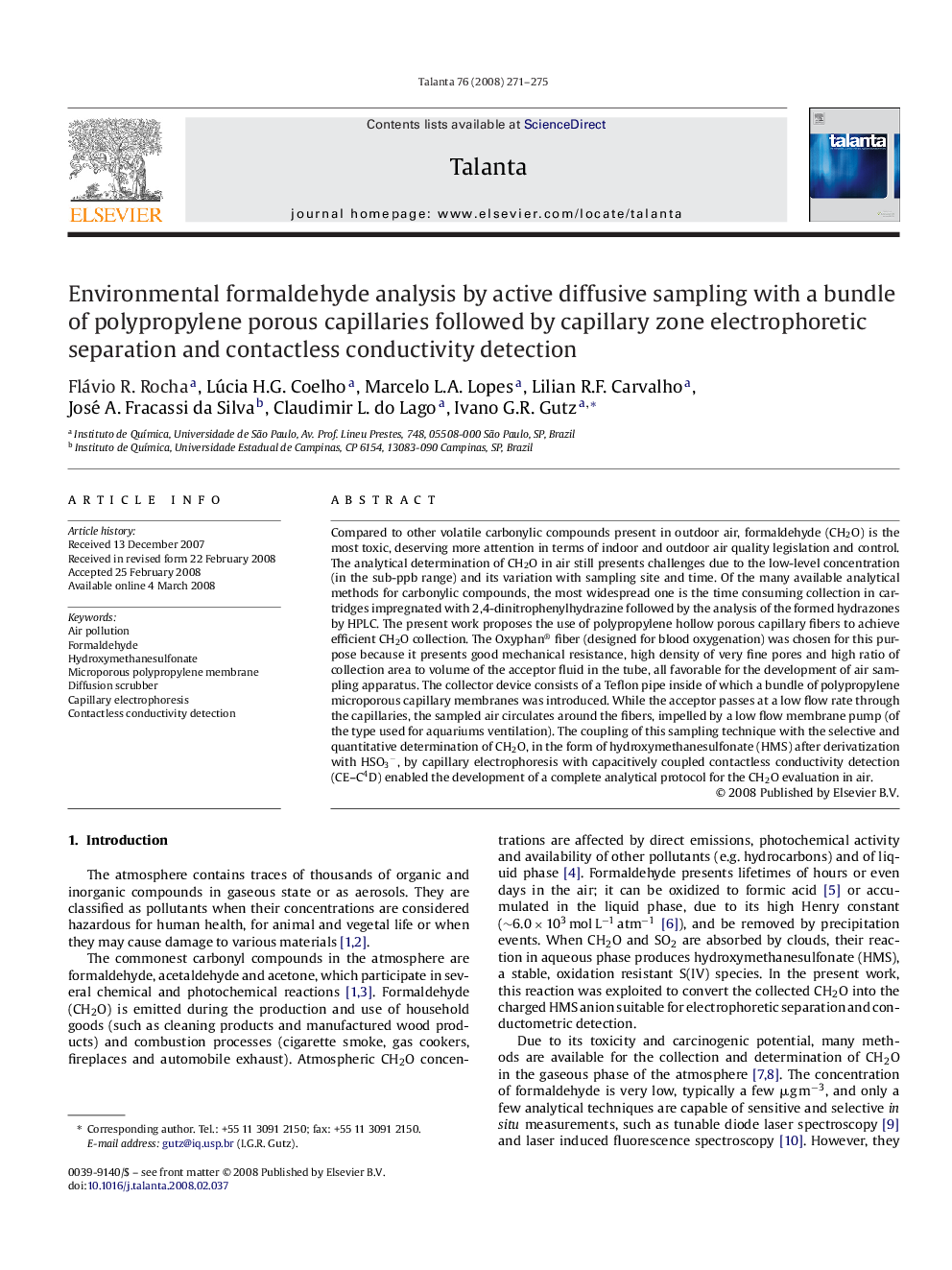| Article ID | Journal | Published Year | Pages | File Type |
|---|---|---|---|---|
| 1245384 | Talanta | 2008 | 5 Pages |
Compared to other volatile carbonylic compounds present in outdoor air, formaldehyde (CH2O) is the most toxic, deserving more attention in terms of indoor and outdoor air quality legislation and control. The analytical determination of CH2O in air still presents challenges due to the low-level concentration (in the sub-ppb range) and its variation with sampling site and time. Of the many available analytical methods for carbonylic compounds, the most widespread one is the time consuming collection in cartridges impregnated with 2,4-dinitrophenylhydrazine followed by the analysis of the formed hydrazones by HPLC. The present work proposes the use of polypropylene hollow porous capillary fibers to achieve efficient CH2O collection. The Oxyphan® fiber (designed for blood oxygenation) was chosen for this purpose because it presents good mechanical resistance, high density of very fine pores and high ratio of collection area to volume of the acceptor fluid in the tube, all favorable for the development of air sampling apparatus. The collector device consists of a Teflon pipe inside of which a bundle of polypropylene microporous capillary membranes was introduced. While the acceptor passes at a low flow rate through the capillaries, the sampled air circulates around the fibers, impelled by a low flow membrane pump (of the type used for aquariums ventilation). The coupling of this sampling technique with the selective and quantitative determination of CH2O, in the form of hydroxymethanesulfonate (HMS) after derivatization with HSO3−, by capillary electrophoresis with capacitively coupled contactless conductivity detection (CE–C4D) enabled the development of a complete analytical protocol for the CH2O evaluation in air.
